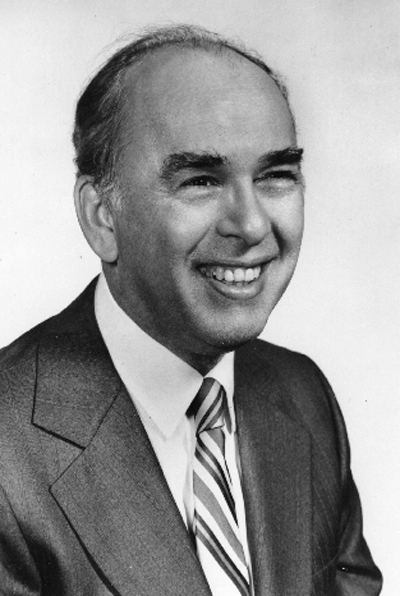Residence USA Role Medical Doctor Nationality American | Notable awards Karl Lashley Name David Bodian | |
 | ||
Born May 15, 1910St. Louis, Missouri ( 1910-05-15 ) Known for polio research, pioneer work on polio vaccines Died September 18, 1992, Balti, Maryland, United States | ||
David Bodian (15 May 1910 – 18 September 1992) was an American medical scientist at the Johns Hopkins University School of Medicine who worked in polio research. In the early 1940s he helped lay the groundwork for the eventual development of polio vaccines by combining neurological research with the study of the pathogenesis of polio. With his understanding of the disease, he made a series of crucial discoveries that paved the way for the final development of a vaccine by Jonas Salk and later by Albert Sabin.
Contents
Biography
David Bodian was born in St. Louis to Jewish parents who had recently immigrated from the Ukraine. He grew up in Chicago, where he attended public school. In 1929 Bodian took up the study of science at the University of Chicago, where he received a bachelor of science degree in zoology in 1931, his Ph.D. in anatomy in 1934 and his M.D. in 1937. After spending some months at the University of Michigan as a National Research Council Fellow, he came to Johns Hopkins University in 1939 as a research fellow in anatomy. This was the beginning of a long-standing partnership with Howard Howe, although in 1941 Bodian served an interim period of a few months as an assistant professor of anatomy at the Western Reserve University School of Medicine in Cleveland, Ohio. When the National Foundation for Infantile Paralysis awarded funding to the Department of Epidemiology at the Johns Hopkins School of Hygiene and Public Health to support research on polio, Bodian returned to Hopkins, and he and Howe joined the School of Hygiene to continue their research. He was the Editor-in-Chief of the American Journal of Epidemiology from 1948 until 1957.
Bodian advanced from Assistant Professor in epidemiology to Associate Professor in 1946, and became Professor of Anatomy and director of the department in 1957. When he accepted the position of professor emeritus of anatomy and neurobiology in the Department of Laryngology and Otology in 1977, he ran an electron microscopy laboratory. In his later work, Bodian studied the spiral structure within the cochlea known as the Organ of Corti.
David Bodian married Elinor Widmont, a medical illustrator and painter who contributed illustrations to some of Bodian’s published articles, in 1944. They had five children. Bodian died of Parkinson's disease in September 1992.
Pioneer work on polio vaccines
Over the next twenty years, the Hopkins team made a series of discoveries, several of which were crucial for the development of a vaccine against polio. In 1946 Isabel Morgan joined the team and together they found out that there were three basic immunological types of poliovirus, explaining the phenomenon of second infections and the fact that artificial immunity to only one strain would not protect against infection with one of the others. Their publication on the “Differentiation of Types of Poliomyelitis Viruses,” in the American Journal of Hygiene in 1949 became a milestone in the development of new polio vaccine methods.
The contributions of Bodian, Morgan, and Howe thus laid the scientific groundwork for the subsequent development of the Salk and Sabin polio vaccines. In Bodian's own summary their accomplishments were:
1) the elucidation of the pathogenesis and pathology of poliovirus in monkeys, chimpanzees and man; 2) the introduction of the chimpanzee into poliomyelitis research, as a model for the disease in human beings; 3) the demonstration that experimental primates and man could be successfully immunized with formalin-treated virus, and that immunity in monkeys was correlated with the presence of serum antibody; 4) the discovery of the three basic immunological poliovirus types. These studies were crucial for setting the stage for vaccine development; 5) the demonstration of a viremic phase of poliovirus infection in the pre-symptomatic period, and its relationship to poliovirus invasion of the central nervous system; and 6) the demonstration that minimal levels of serum antibody were sufficient to protect against poliovirus invasion of the central nervous system, after virus feeding, by blockage of viremic invasion.
Honors and awards
In 1941 Bodian received the E. Mead Johnson Award in Pediatrics from the American Academy of Pediatrics. In 1958, he was inducted along with his colleagues Howe and Morgan and twelve other polio experts into the Polio Hall of Fame at the Georgia Warm Springs Foundation. He was elected to the National Academy of Sciences in 1958, and the American Academy of Arts and Sciences in 1968. He was elected a Fellow of the American Academy of Arts and Sciences in 1968 and the American Philosophical Society in 1973. In 1985, the Society honored him with the Karl Spencer Lashley Award. Bodian was an honorary member of the Anatomical Society of Great Britain and Ireland, the French Neurological Society, and the Mexican Society of Anatomy, and he served as president of the American Association of Anatomists from 1971 to 1972.
In 1980, the Johns Hopkins University dedicated the Bodian Room in recognition of his contributions to polio research. He received an honorary doctorate from the university in 1987, and the year before his death, in the spring of 1991, the School of Hygiene and Public Health named him one of seventy-five “Heroes of Public Health.”
